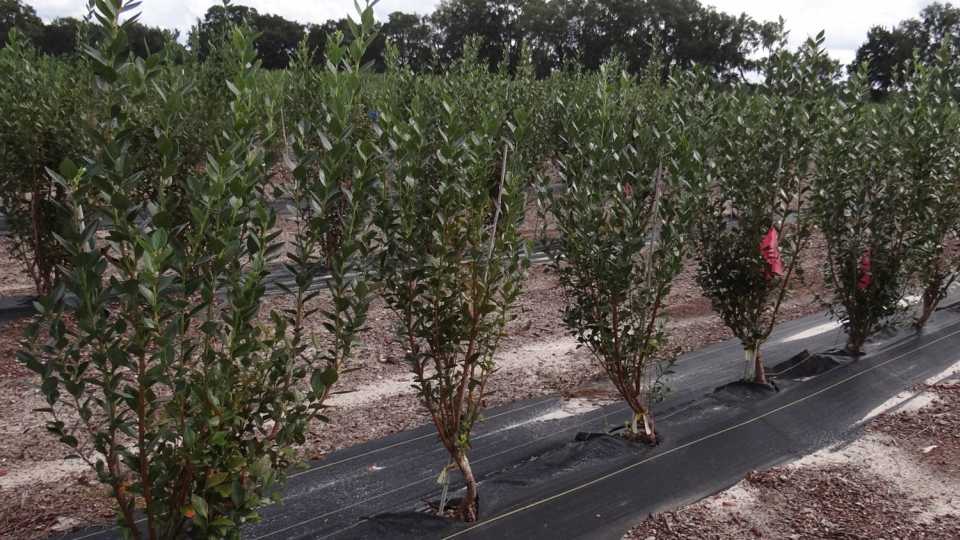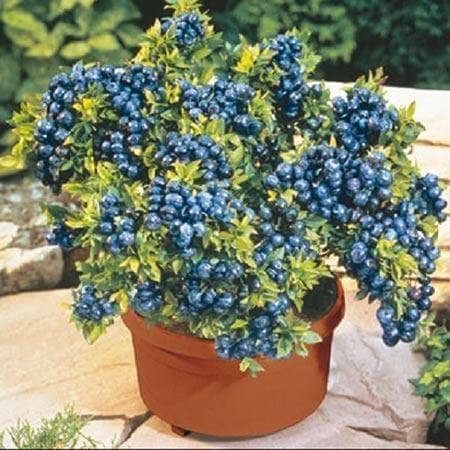If you’re thinking about growing blueberries in Florida, you probably know it’s not as simple as planting any variety and hoping for the best. Florida’s unique climate and soil conditions mean you need the right blueberry plants to thrive and produce delicious fruit year after year.
Choosing the best blueberry plants for Florida can make all the difference between a bountiful harvest and a frustrating gardening experience. You’ll discover the top blueberry varieties that flourish in Florida’s heat and humidity, plus tips to help you get started with confidence.
Keep reading to find out how you can grow your own juicy blueberries successfully right at home!
Blueberry Types For Florida
Choosing the right blueberry type is key for success in Florida’s warm climate. Different varieties suit different regions of the state. Each type has unique needs and benefits.
Understanding these types helps gardeners pick the best plants. It ensures healthy growth and a good harvest of sweet berries.
Southern Highbush Varieties
Southern Highbush blueberries grow well in Central and South Florida. They handle heat better than northern types. These plants need less chill hours to produce fruit. They are also self-fertile, meaning one plant can bear fruit. Popular varieties include ‘Misty’ and ‘Emerald’. These produce large, sweet berries. They prefer acidic soil and good drainage. Southern Highbush plants need protection from late frosts in some areas.
Rabbiteye Varieties
Rabbiteye blueberries thrive in North and Central Florida. They tolerate heat and humidity well. These bushes grow taller and have larger yields. Rabbiteye plants require cross-pollination from other rabbiteye varieties. Common types are ‘Tifblue’ and ‘Premier’. Rabbiteye berries are smaller but very flavorful. They do best in well-drained, acidic soils. These plants are hardy and long-living.
North Florida Options
North Florida has a cooler climate with occasional frost. Both Southern Highbush and Rabbiteye types can grow here. Southern Highbush varieties may need frost protection. Rabbiteye bushes are more frost resistant. ‘Climax’ and ‘Powderblue’ are good choices for this region. Soil should be acidic and well-drained. Mulching helps protect roots from cold. Careful selection ensures a healthy blueberry crop.
Planting Time And Tips
Planting blueberries in Florida requires careful timing and proper care. Choosing the right moment to plant and preparing the soil well ensures healthy growth. Watering and mulching also help your plants thrive in Florida’s warm climate. Follow these tips to grow strong blueberry bushes.
Best Months To Plant
Plant blueberries in Florida between mid-December and mid-February. This cooler period helps plants develop roots before summer heat arrives. Avoid planting during hot months, as young bushes may struggle. Early planting gives your blueberries a better chance to establish.
Soil Preparation
Blueberries need acidic soil with a pH between 4.5 and 5.5. Test your soil before planting and add sulfur if needed to lower pH. Mix organic matter like peat moss or pine bark into the soil. This improves drainage and keeps roots healthy in Florida’s sandy soils.
Watering And Mulching
Keep soil moist but not waterlogged during the first year. Water your plants deeply two to three times each week. Apply a 2 to 4-inch layer of pine straw or wood chips around the base. Mulching helps retain moisture and controls weeds, making it easier for blueberries to grow well.
Heat Tolerance And Climate
Florida’s warm climate poses challenges for growing blueberries. High temperatures can stress plants, reducing fruit quality and yield. Choosing heat-tolerant blueberry varieties is essential for success. Understanding how to protect plants from heat and frost will improve your harvest. This section covers key tips for managing Florida’s unique climate conditions.
Handling Florida Heat
Blueberry plants need protection from intense sun and heat. Use mulch to keep soil cool and moist. Water plants deeply but avoid waterlogging. Plant blueberries where they get morning sun and afternoon shade. Southern highbush varieties handle heat better than rabbiteye types. Regular pruning improves air flow and reduces heat stress.
Frost Protection Strategies
Frost can damage blueberry buds in North Florida. Cover plants with frost cloth or blankets during cold nights. Use wind machines or heaters in large gardens to keep air moving. Water plants before a frost event to protect roots and stems. Plant blueberries on slopes or raised beds to reduce frost risk. Choose cultivars with some cold tolerance for extra safety.

Credit: www.growingproduce.com
Soil And Ph Requirements
Growing blueberries in Florida requires attention to soil and pH levels. Blueberries thrive in acidic, well-drained soils. The right soil conditions help plants absorb nutrients and produce sweet fruit. Understanding soil needs is key to a healthy blueberry garden.
Ideal Soil Conditions
Blueberries prefer sandy or loamy soils in Florida. These soils drain water quickly and avoid root rot. The soil should be rich in organic matter to hold moisture. Good airflow around roots prevents disease. Avoid heavy clay soils unless properly amended.
Soil texture affects blueberry growth. Loose, crumbly soil lets roots spread easily. Florida’s native sandy soils work well with added organic material. Ensure the soil stays moist but not soggy for best results.
Amending Soil For Acidity
Blueberries need acidic soil with a pH between 4.5 and 5.5. Florida soils often have higher pH, which can limit nutrient uptake. Lowering soil pH improves plant health and fruit quality.
Use elemental sulfur or peat moss to acidify the soil. Mix amendments well into the top 6 to 8 inches of soil. Test soil pH regularly to track changes. Reapply amendments each year as needed to maintain acidity.
Mulching with pine needles or bark helps keep soil acidic. It also conserves moisture and reduces weeds. Proper soil acidity ensures your blueberry plants grow strong and produce abundant berries.
Companion Planting
Companion planting helps blueberry plants grow strong and healthy in Florida gardens. Choosing the right neighbors can improve soil, reduce pests, and increase yields. Some plants work well near blueberries by supporting their needs. Others can harm blueberry plants or reduce their growth.
Understanding which plants to avoid near your blueberry bushes is important. This knowledge keeps your garden balanced and productive. It also prevents common problems that might stunt your blueberry plants.
Plants To Avoid
Brassicas like cabbage, broccoli, and kale are bad companions. They use many nutrients and can crowd blueberries. Nightshades such as tomatoes, potatoes, and peppers also compete for nutrients. These plants prefer different soil types and may introduce pests.
Walnut trees should be kept away. They release juglone, a chemical toxic to blueberries. Avoid planting blueberries near corn as it attracts pests harmful to berries. Avoid plants that need alkaline or neutral soil since blueberries require acidic soil.
Reasons For Avoidance
Plants that compete for the same nutrients reduce blueberry growth. Blueberries need acidic soil, so neighbors that prefer alkaline soils cause imbalance. Some plants release chemicals that hurt blueberry roots or stop their growth. Pests attracted by certain plants may damage blueberries.
Good airflow and sunlight are vital for blueberries. Crowded plants block light and air, increasing disease risk. Avoiding wrong plants keeps your blueberry patch healthy and productive. Careful companion planting supports strong blueberry plants in Florida gardens.
Common Pests And Diseases
Blueberry plants in Florida face several pests and diseases that can affect their growth and fruit yield. Common pests include aphids, spider mites, and blueberry maggots. These insects feed on the leaves, stems, or fruit, causing damage and stress to the plants.
Diseases such as powdery mildew, root rot, and mummy berry are frequent problems. They can stunt plant growth, reduce fruit quality, and sometimes kill the bushes. Understanding how to manage pests and prevent diseases is key to a healthy blueberry crop.
Pest Management
Regularly inspect plants for signs of pests. Use insecticidal soaps or neem oil to control aphids and mites. Remove fallen fruit to reduce maggot infestations. Introducing natural predators like ladybugs helps keep pest populations low. Avoid over-fertilizing, which attracts more pests.
Disease Prevention
Plant blueberries in well-drained soil to prevent root rot. Prune bushes to improve air circulation and reduce mildew risk. Water plants at the base to keep leaves dry. Apply fungicides if needed, following label instructions carefully. Clean gardening tools to stop disease spread between plants.
Harvesting And Care
Harvesting and caring for blueberry plants in Florida requires attention to timing and proper maintenance. These steps help your plants stay healthy and produce more fruit. Understanding when to pick blueberries and how to prune your bushes makes a big difference. Follow simple care tips to enjoy fresh blueberries from your garden.
When To Harvest
Blueberries usually ripen from late spring to early summer in Florida. Check the berries daily as they change from green to blue. Ripe blueberries are deep blue with a slight dusty look. They should come off easily when gently pulled. Harvest in the morning for the best flavor and freshness. Avoid picking berries that are still pink or red.
Pruning Techniques
Pruning helps blueberry plants grow strong and produce more fruit next season. Cut away any dead or weak branches each winter. Remove older canes that are more than six years old to allow new growth. Keep the center of the bush open for air and sunlight. Use clean, sharp tools to make clean cuts. Prune lightly after harvest to shape the plant without stressing it.

Credit: floridaplantsnursery.com

Credit: www.tallahassee.com
Frequently Asked Questions
Which Blueberries Grow Best In Florida?
Southern highbush blueberries grow best in Florida, especially in Central and South Central regions. They tolerate heat and mild winters well. Protect northern plants from late frosts for better growth.
What Month To Plant Blueberries In Florida?
Plant blueberries in Florida between mid-December and mid-February. This timing helps roots establish before summer heat arrives.
What Are The Most Heat Tolerant Blueberries?
Southern Highbush and Rabbiteye blueberries are the most heat tolerant varieties. They thrive in warm climates and acidic soils. Southern Highbush types perform well in Florida and Texas heat, while Rabbiteye types tolerate heat and drought better. Both suit hot, sunny environments.
What Should You Not Plant Next To Blueberries?
Avoid planting brassicas, nightshades, walnut trees, alkaline-loving herbs, cucumbers, melons, squashes, and raspberries next to blueberries. These plants compete for nutrients or need different soil conditions.
Conclusion
Choosing the right blueberry plants makes all the difference in Florida gardens. Southern highbush varieties suit Florida’s warm climate well. Plant them between December and February for best growth. Avoid planting near crops that compete for nutrients or change soil pH.
Regular care and proper soil help blueberries thrive here. Healthy plants mean tasty, fresh berries each season. Start with these tips to enjoy homegrown blueberries in Florida. Your garden will thank you with a bountiful harvest.
